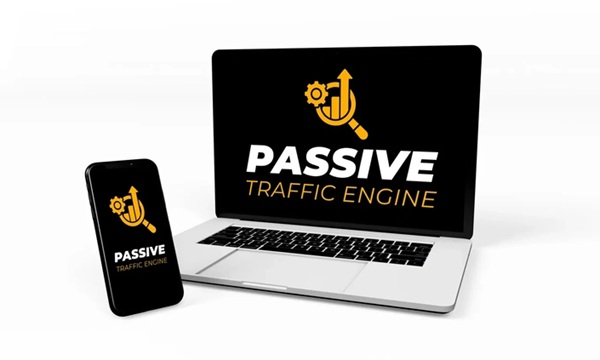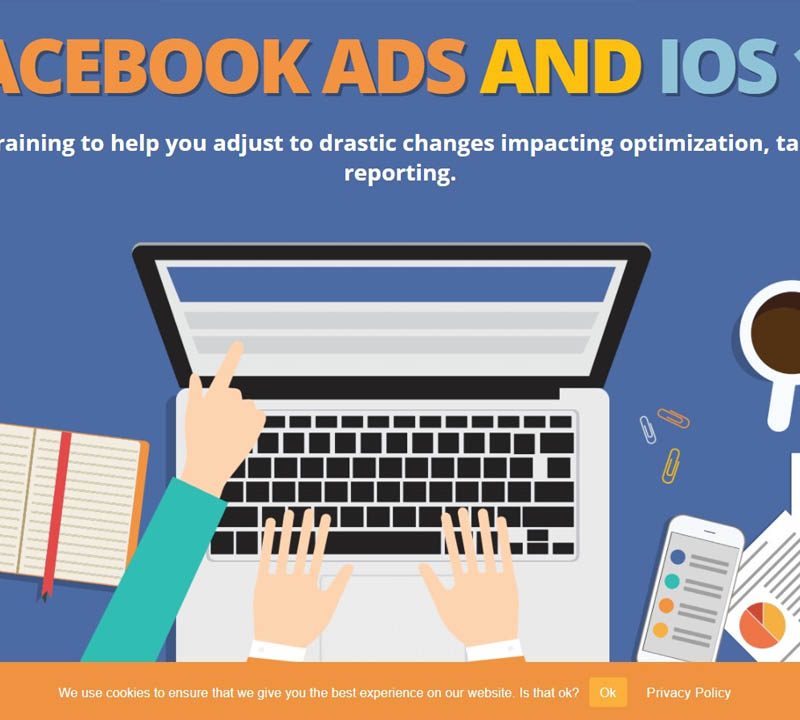[GroupBuy] Passive Traffic Engine – Matt Giaro
$59.00
Discount 20% if your total cart over $150
- Satisfaction Guaranteed
- Fast and forever download link
- Secure Payments
- Reupload FREE
Description
The Passive Traffic Engine promises a revolutionary approach to SEO, allowing individuals to dominate Google’s first page without the traditional reliance on backlinks and expensive tools. This article delves deep into the core principles, strategies, and potential benefits of this system, empowering you to decide if it’s the key to unlocking your website’s traffic potential.
Understanding the Core Principles of the Passive Traffic Engine
The Passive Traffic Engine revolves around a radical shift in SEO strategy, focusing on what you can control rather than chasing elusive backlinks and competing for saturated keywords. It’s about building a sustainable, long-term traffic stream that operates on autopilot.
In the age where search engines are increasingly sophisticated, understanding how to optimize your content for both human readers and AI algorithms is paramount. The Passive Traffic Engine addresses this by offering a step-by-step system designed to make your website a magnet for organic traffic.
The Power of Controllable SEO Factors
Traditional SEO often feels like a game of chance, relying on external factors like backlinks that are difficult to acquire and control. The Passive Traffic Engine challenges this notion by emphasizing elements you can directly influence:
- Website Optimization: A fast, well-structured website is crucial for both user experience and search engine rankings.
- Targeted Keyword Research: Identifying the right keywords is the foundation of any successful SEO strategy.
- High-Quality Content: Compelling, informative content that answers user queries is essential for attracting and retaining visitors.
By focusing on these controllable factors, you can create a solid foundation for long-term SEO success. This is especially appealing to beginners who may feel overwhelmed by the complexities of traditional SEO. The promise of circumventing the need for backlinks is a significant draw, as backlink acquisition can be time-consuming and challenging. The argument here is that focusing on these core elements creates a website Google wants to rank highly. Thinking about it, providing Google with exactly what its users are searching for, in an easy-to-access and fast-loading format, should certainly increase visibility.
Tapping into the Untapped Potential of LLMO
The course acknowledges the growing role of AI Large Language Models such as ChatGPT and Perplexity. In essence, this course is preparing content creators for the next wave of search trends. As these AI tools are increasingly used to gather information, optimizing your content for these platforms is becoming crucial.
The claim that the author is already seeing new email subscribers from LLMs is an intriguing testament to the system’s adaptability. This signifies a forward-thinking approach to SEO, recognizing that optimizing content for AI search is just as important as traditional search engines. I am fascinated by this development because the long-term implications of LLM optimization still need to be determined, yet it is also clear that learning this sooner rather than later will be advantageous.
Overcoming the SEO Complexity Barrier
Many individuals are intimidated by the perceived complexity of SEO, believing it requires extensive technical knowledge or a significant time investment. The Passive Traffic Engine aims to dismantle this perception by providing a simple, fast, and proven system that anyone can implement.
The course targets people that see SEO as complicated, competitive or takes along time to be effective. One reason that they think it is too competitive is because people choose to select extremely competitive long-tail keywords. If someone is willing to work hard and put in the effort, the person will see success over a period of time.
Deconstructing the Passive Traffic Engine’s Keyword Strategy
A cornerstone of the Passive Traffic Engine is its unconventional approach to keyword research. Instead of chasing high-traffic, competitive keywords, it advocates for identifying low-competition keywords that are underserved in the search results. This strategy aims to level the playing field, making it easier for beginners to achieve rapid results.
The ‘Undercover’ Keyword Technique
The course promotes an “undercover” technique to identify these low-competition keywords. While the exact details of this technique are kept under wraps, the core principle is to find keywords that have significant search volume but limited competition.
This technique is particularly appealing because it promises to bypass the need for backlinks. The reasoning is that if you can identify keywords with low competition, you can rank highly simply by providing a high-quality, optimized article that answers the searcher’s query. The interesting aspect of this undercover technique is that the website can rise through the ranks to the top without ever building backlinks. It is an unorthodox system but potentially effective if executed correctly.
Picking the Right Battles: A Strategic Approach to Keyword Selection
The emphasis on selecting low-competition keywords is a pragmatic one. It’s about focusing your efforts where you have the highest chance of success. The quote, “One of the keys to winning any battle… is to pick the right battles,” encapsulates this philosophy perfectly.
This approach is particularly beneficial for those with limited resources or expertise. Rather than trying to compete for the most popular keywords, you can focus on niching down and targeting underserved audiences. This allows you to build a loyal following and establish yourself as an authority in a less competitive space.
- High-Competition Keywords: Difficulty in ranking, requires extensive resources, long-term effort
- Low-Competition Keywords: Easier to rank, requires fewer resources, quicker results
Rethinking Keyword Tool Reliance
The Passive Traffic Engine also challenges the conventional wisdom of relying on expensive keyword research tools. While these tools can provide valuable data, they are not essential for identifying low-competition keywords.
This is a welcome departure from the status quo, as many individuals are discouraged by the cost of these tools. The course likely offers alternative methods for identifying keyword opportunities, such as manual research and competitor analysis. This approach makes the system more accessible to beginners and those on a tight budget.
Unveiling the Content Creation Methodology
Content is king, and the Passive Traffic Engine recognizes this by providing a specific methodology for creating SEO-optimized articles that rank highly on Google. This methodology focuses on structuring articles for high rankings, hooking readers, and creating content that drives traffic for years.
The 60-Minute Content Creation Promise
The course claims to teach you how to write SEO-optimized articles in 60 minutes or less. This is a bold claim, but it suggests that the methodology is highly efficient and streamlined. When implemented correctly, a 60-minute content creation article schedule can effectively increase the amount of money earned over time. A 60-minute content creation method is also an extremely useful skill in the age of short-form content creation, such as TikTok, Instagram Reels, and Youtube Shorts.
Why Word Count Is (Almost) Irrelevant.
The Passive Traffic Engine dismisses the conventional wisdom that long-form content is always better. It argues that word count is (almost) irrelevant to ranking on Google’s first page, focusing instead on creating concise, informative articles that directly answer the searcher’s query.
This is a controversial stance, as many SEO experts advocate for long-form content. However, the Passive Traffic Engine’s argument is that quality trumps quantity. A shorter, more focused article that provides genuine value to the reader may outrank a longer, more rambling article. This also speaks to Google’s algorithm prioritizing content that has a lower bounce rate.
Structuring Content for High Rankings
While the exact details are course-specific, the core principle is to structure articles for readability and SEO. This includes:
- Using clear headings and subheadings: To make the content easy to scan.
- Optimizing keywords: Strategically incorporating keywords throughout the article, however, this needs to be done in a way that is not noticeable.
- Writing compelling introductions: To hook the reader and encourage them to stay on the page.
- Providing valuable information: To answer the searcher’s query and establish yourself as an authority.
While these elements are not new, they are important. The Passive Traffic Engine’s methodology likely provides a specific framework for implementing these elements in a way that maximizes their impact. When implemented correctly, this can improve search engine ranking and organic search traffic.
Mastering Website Optimization for SEO Success
A fast, well-optimized website is crucial for both user experience and search engine rankings. The Passive Traffic Engine includes guidance on optimizing your website itself for speed and structure to support higher rankings and a better user experience.
Building a Google-Friendly Website in 48 Hours
A bonus module included in the course is titled “Build A Website Google Loves in Just 48 Hours”, this module is about website optimization. This module claims to teach you how to create a website that Google loves in just 48 hours. This is a bold claim, but it suggests that the course provides a streamlined and effective approach to website optimization, for example recommending WordPress.
This module likely covers topics such as:
- Choosing a fast hosting provider: Website speed is a crucial ranking factor.
- Optimizing images: Large images can slow down your website.
- Minimizing code: Unnecessary code can bloat your website and slow it down.
- Using a caching plugin: Caching can significantly improve website speed.
The main takeaway here is that the bonus module offers tools for speed optimization. This is especially useful for beginners who may not have the technical expertise to optimize their website themselves. All that is needed is for the person to have a willingness to read and put in the effort.
The Importance of Mobile Optimization
With the increasing use of mobile devices, ensuring your website is mobile-friendly is essential. Google prioritizes mobile-friendly websites in its search results.
This means that your website should be responsive, adapting to different screen sizes. It should also be easy to navigate on a mobile device. The Passive Traffic Engine likely provides guidance on how to optimize your website for mobile devices. This makes perfect sense as mobile-friendliness is essential to capture the widest audience and satisfy Google’s ranking criteria.
User Experience (UX) and SEO
User experience (UX) is becoming increasingly important for SEO. Google uses UX signals, such as bounce rate and dwell time, to determine the quality of your website.
A website with a good UX will have a lower bounce rate and a higher dwell time. This tells Google that visitors are finding your website valuable and engaging. The Passive Traffic Engine likely emphasizes the importance of UX and provides tips on how to improve it. These tips often include: optimizing website speed, structuring your website using categories and sub-categories and incorporating interactive elements.
Analyzing the Promises and Proof Points
The sales page for the Passive Traffic Engine makes some bold claims about the speed and effectiveness of the system. It showcases examples of articles ranking on Page 1 in as little as 2, 4, 5, 22, 23, and 24 hours.
Fast Results and Case Studies
The speed at which results can be achieved is a major selling point of the Passive Traffic Engine. The sales page showcases examples of articles ranking on Page 1 in an extremely short amount of time.
While these examples may be cherry-picked, they demonstrate the potential of the system. The claim that the system has generated 5,500 VISITORS PER MONTH IN JUST 8 MONTHS and continues to deliver a constant flow of 200-300 visitors per day is also compelling. At the end of the day, if used and implemented correctly this course can generate a large amount of passive traffic.
The No Backlink Advantage: Reality vs. Hype
The claim that the system does not require backlinks is a major point of differentiation. The official course title states, “The No Backlink Strategy to Rank on Google’s First Page is a key selling point.”
While it’s possible to rank for low-competition keywords without backlinks, it’s important to be realistic. Backlinks are still a valuable ranking factor, and in many cases, are essential for long-term success. The Passive Traffic Engine’s approach may be more effective for niche websites with limited competition.
Who is The Passive Traffic Engine Right for?
The Passive Traffic Engine is specifically designed for individuals seeking to establish a sustainable stream of organic traffic without investing heavily in traditional SEO tactics. Understanding its alignment with your individual needs and resources will determine if it’s the right fit for you.
Ideal Candidates for the Course
The course is likely to appeal to:
- Beginners: Who are new to SEO and want a simple, easy-to-follow system.
- Small business owners: Who want to generate leads and sales without spending money on paid advertising.
- Bloggers: Who want to increase their website traffic and build a larger audience.
- Individuals on a Tight Budget: Who can’t afford expensive SEO tools or backlink building services.
- Entrepreneurs: Who want an automated lead generation system.
- People who want simple fast processes: That don’t need extensive SEO experience.
The course targets people that perceive traditional SEO as too difficult, too time consuming or too competitive. It is also good for the person who is willing to learn, implement the course’s strategy and have patience.
Potential Limitations
The Passive Traffic Engine may not be suitable for:
- Individuals seeking immediate results: The course focuses on long-term sustainable traffic, which takes time to build.
- Businesses targeting highly competitive keywords: The focus on low-competition keywords may not be effective in highly competitive niches.
- Experienced SEOs: Who are already familiar with the core principles of SEO.
- Individuals unwilling to create content: Content creation is a core component of the Passive Traffic Engine.
- Anyone expecting a ‘magic bullet’: The success of the Passive Traffic Engine depends on consistent effort and implementation.
Before investing in the course, it’s important to assess your own needs and expectations. While it offers a promising approach to SEO, it’s not a guaranteed path to success.
Conclusion
The Passive Traffic Engine presents a compelling alternative to traditional SEO, emphasizing controllable factors, low-competition keywords, and efficient content creation. While its claims of bypassing the need for backlinks should be approached with cautious optimism, the course offers a structured system that could be particularly beneficial for beginners and those seeking a sustainable stream of organic traffic. Ultimately, the suitability of the Passive Traffic Engine depends on individual needs, resources, and a willingness to invest the time and effort required for successful implementation.
Sales Page:_https://mattgiaro.com/courses/passive-traffic-engine/
Delivery time: 12 -24hrs after paid






 Kate Bagoy – Six Figure Freelancers
Kate Bagoy – Six Figure Freelancers  Bruce Whipple – QLA 7-Steps Deep Dive Boot Camp
Bruce Whipple – QLA 7-Steps Deep Dive Boot Camp